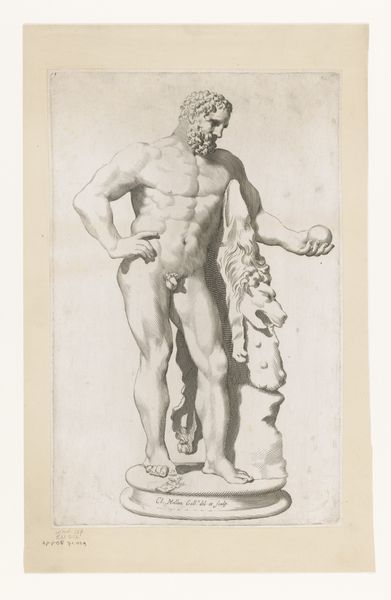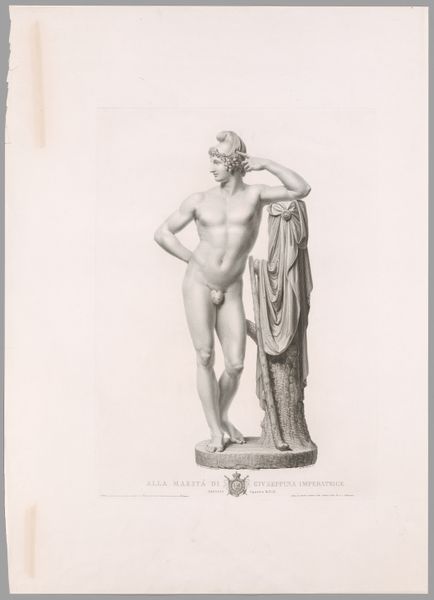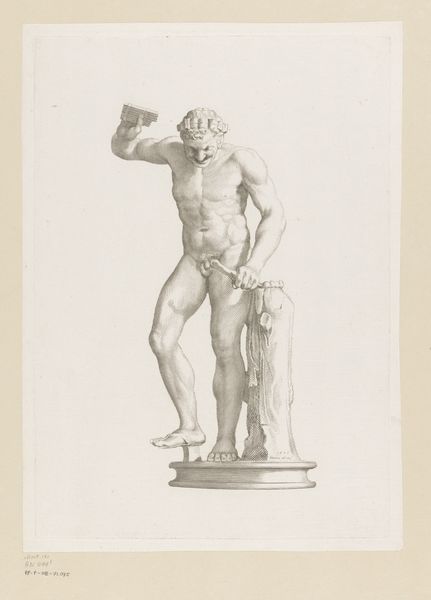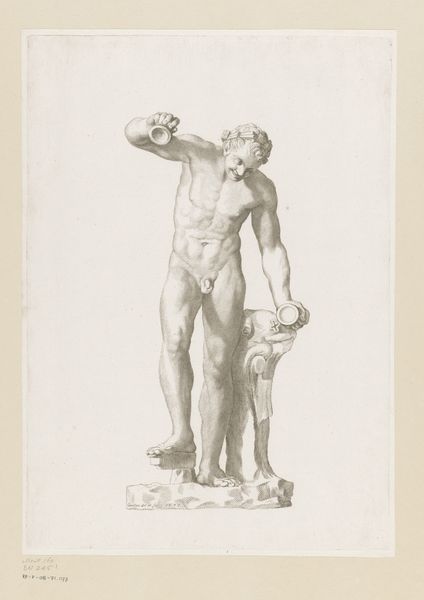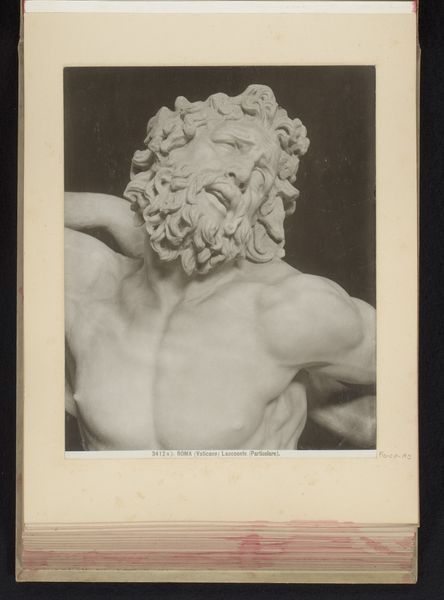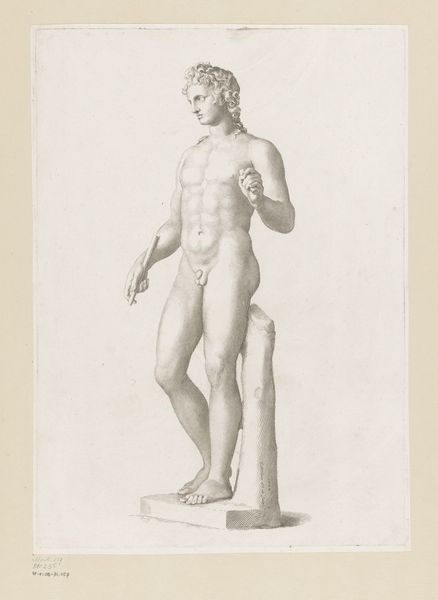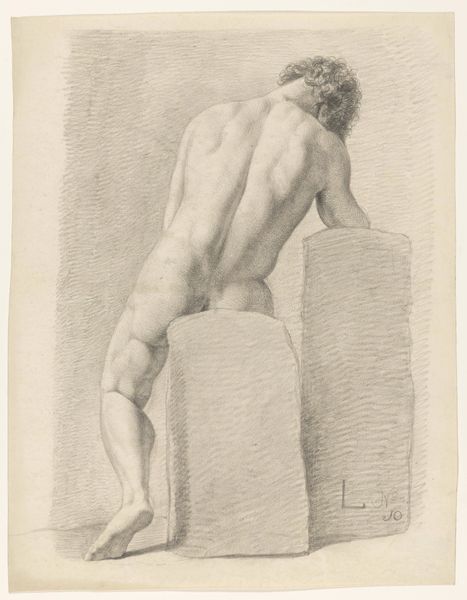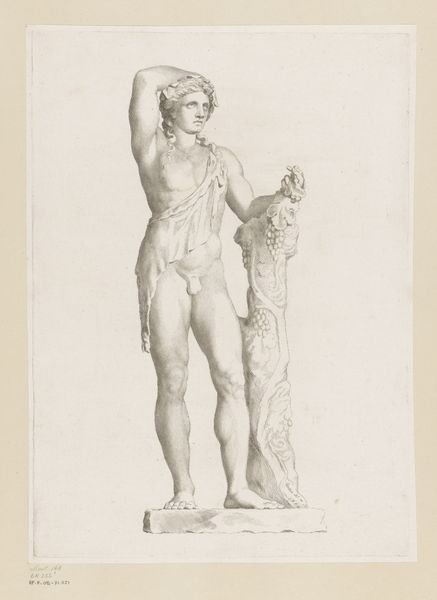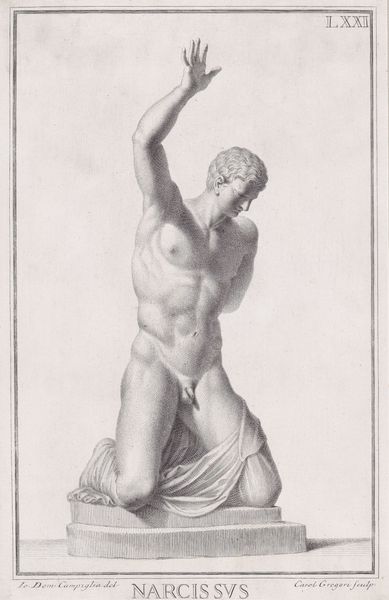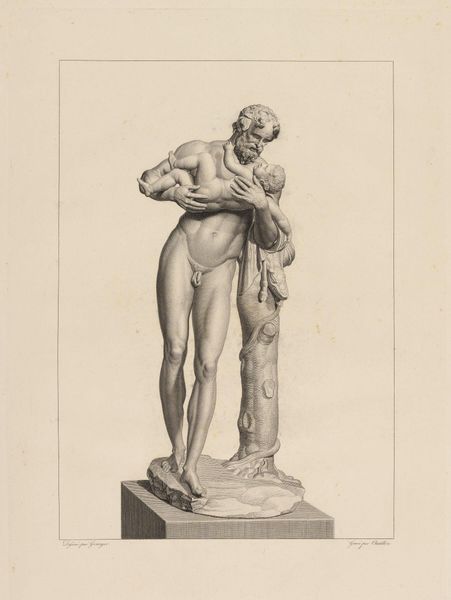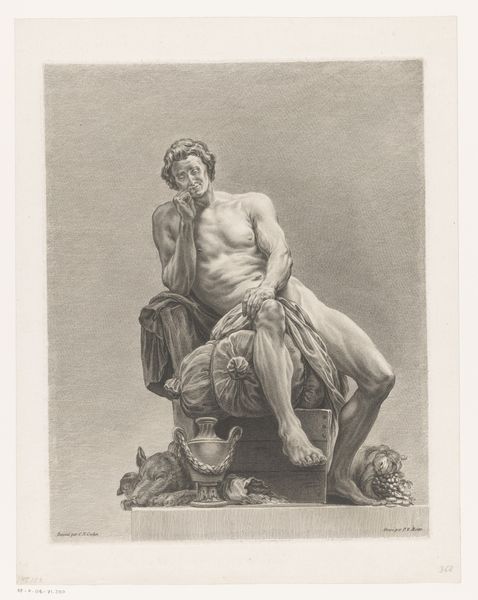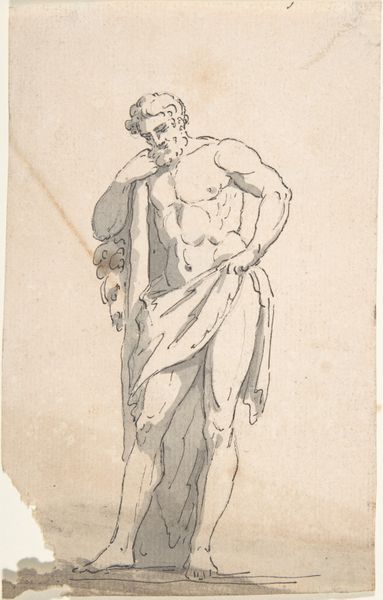
drawing, sculpture, pencil, charcoal
#
pencil drawn
#
drawing
#
pencil sketch
#
classical-realism
#
charcoal drawing
#
form
#
pencil drawing
#
ancient-mediterranean
#
sculpture
#
pencil
#
line
#
pencil work
#
charcoal
#
history-painting
#
academic-art
#
realism
Dimensions: height 538 mm, width 425 mm
Copyright: Rijks Museum: Open Domain
Jean-Augustin Daiwaille made this drawing of the Torso of Laocoön with pen in the early 19th century. This is an image after an ancient sculpture, discovered in Rome in 1506. It depicts a Trojan priest and his sons being strangled by serpents. As a famous classical sculpture, the Laocoön became a symbol of high art, and plaster casts were displayed in art academies across Europe. Daiwaille's drawing, therefore, speaks to the institutional practice of copying from the antique as part of academic artistic training. Note the use of hatching and cross-hatching to render the muscularity of the figure. This was part of the standard visual vocabulary for representing the ideal male nude at this time. The historian of art can use institutional records, pedagogical material, and critical commentary to understand the place of this work in 19th century art education. The meaning of art is always contingent on its social and institutional context.
Comments
No comments
Be the first to comment and join the conversation on the ultimate creative platform.
